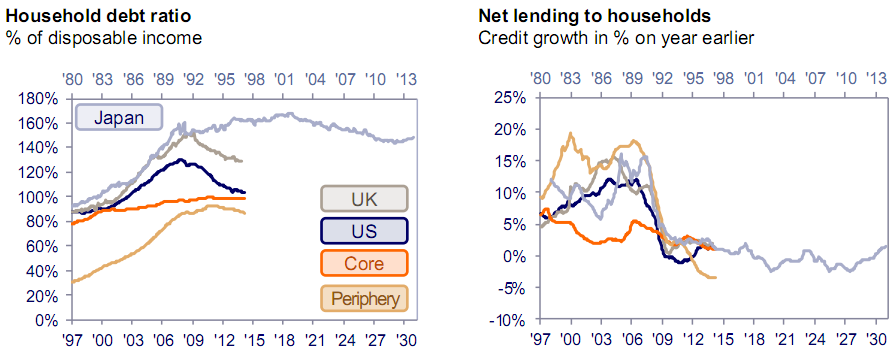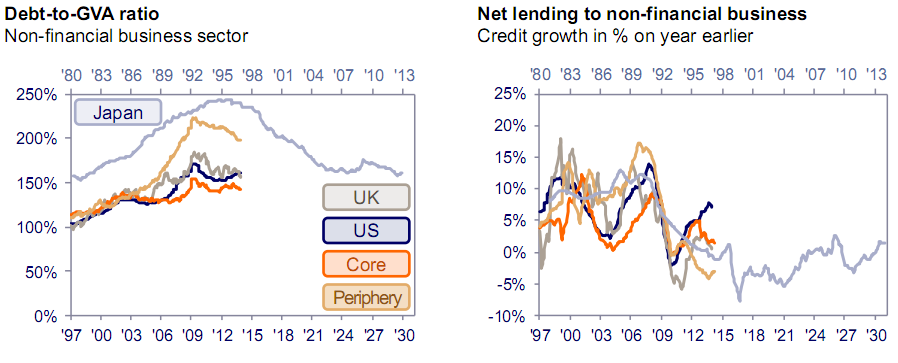Banks create money out of nothing, but an individual bank doesn’t. This is the money creation paradox, and it helps to explain many common misunderstandings about money and monetary policy. While it is true that bank deposits, which these days dominate the money supply, are created in the process of banks making loans, it is not true that they can be created without restraint.
So what explains the money creation paradox? The key is to recognise that an individual bank, when it makes a loan, doesn’t usually retain the associated bank deposit. The borrower typically uses the loan to buy something from someone else, who will deposit the proceeds in their bank, which typically will be another bank. The lending bank therefore has to ensure that it can fund the loan. So while banks as a whole create money ‘out of nothing’ by making loans which result in the corresponding deposits which contribute to the supply of money, every individual bank still has to compete to secure the deposits that are backing their loans, or else borrow the money, raise capital or sell other assets. At the same time, they also have reconcile their profit goals with prudent levels of risk, capital and liquidity.
This narrative runs counter to the story typically told by many economists, who gloss over the distinction between the behaviour of the banking system as a whole and that of individual banks. In their simplified world, it’s as if the system consists of a single bank (now there’s one that’s too big to fail!). Such a Megabank would indeed be able to create money out of nothing, since its loans would automatically be matched by the deposits credited to its borrowers.
The usual line of thinking leads to the idea that banks can create money without restraint. In the wake of the financial crisis, it is then a small step to assert that banks can’t be trusted with money creation. Yet the money creation paradox highlights the fact that banks can’t create money without restraint, and that other players in the system also affect the outcome, creating and destroying money.
Indeed, the central banks have a big role to play in the money creation process. They influence the money supply by setting interest rates, which affect the volume of bank lending and deposit creation by banks. Yet the financial crisis has forced the central banks to move beyond a reliance on interest rates to set the monetary climate. With official interest rates having been cut to zero, or as near as practically possible, they have had to look for other tools. Enter ‘quantitative easing’: the central banks in the developed world have moved directly into the money creation business. Central banks are buying assets, such as bonds, in a big way. To the extent that these are drawn from outside the banking system, the central banks increase money supply by boosting the bank deposits of the investors who are selling the assets.
The problem is that the central banks efforts to boost the money supply through quantitative easing have to contend not just with the behaviour of the banks, but also the banks’ customers. The money supply also depends on the customers’ demand for it. If they don’t wish to hold the deposits that are created by sales of assets to the central bank, or loans that banks are making to them, then there is nothing to stop them ‘destroying’ money by, say, buying bonds from banks or simply repaying their loans. In effect, for all the attempts by the central banks to set the monetary climate, the monetary weather is set by the banks’ and customers’ desire to create and hold deposits.
The money creation paradox reveals why criticism of the banks for creating too much, or too little money, is misguided: the money supply is not determined by banks alone. Instead, the key question about the banks’ role in money creation should be about a counterpart of money creation, namely lending. Shouldn’t we be more concerned about the quality of the loans and other assets that the banks are holding to back their depositors’ money? After all, financial crises tend to arise not from bank-created money cycles but from credit-fuelled booms and bust in asset prices. Regulatory tightening and a renewed focus on macroprudential supervision has already gone a long way to addressing concerns about bank lending.
But turning attention to bank lending highlights the fact that banks are not the only providers of credit. Non-bank credit, be it other non-bank financial institutions or capital markets, already play a major role and may become more important as banks are encouraged to de-risk further. This brings us to another paradox: those who worry about bank’s money creation may be looking both at the wrong side of the balance sheet and at the wrong institutions.
Read The Money Creation Paradox for more (note: updated and refreshed in May 2018).


